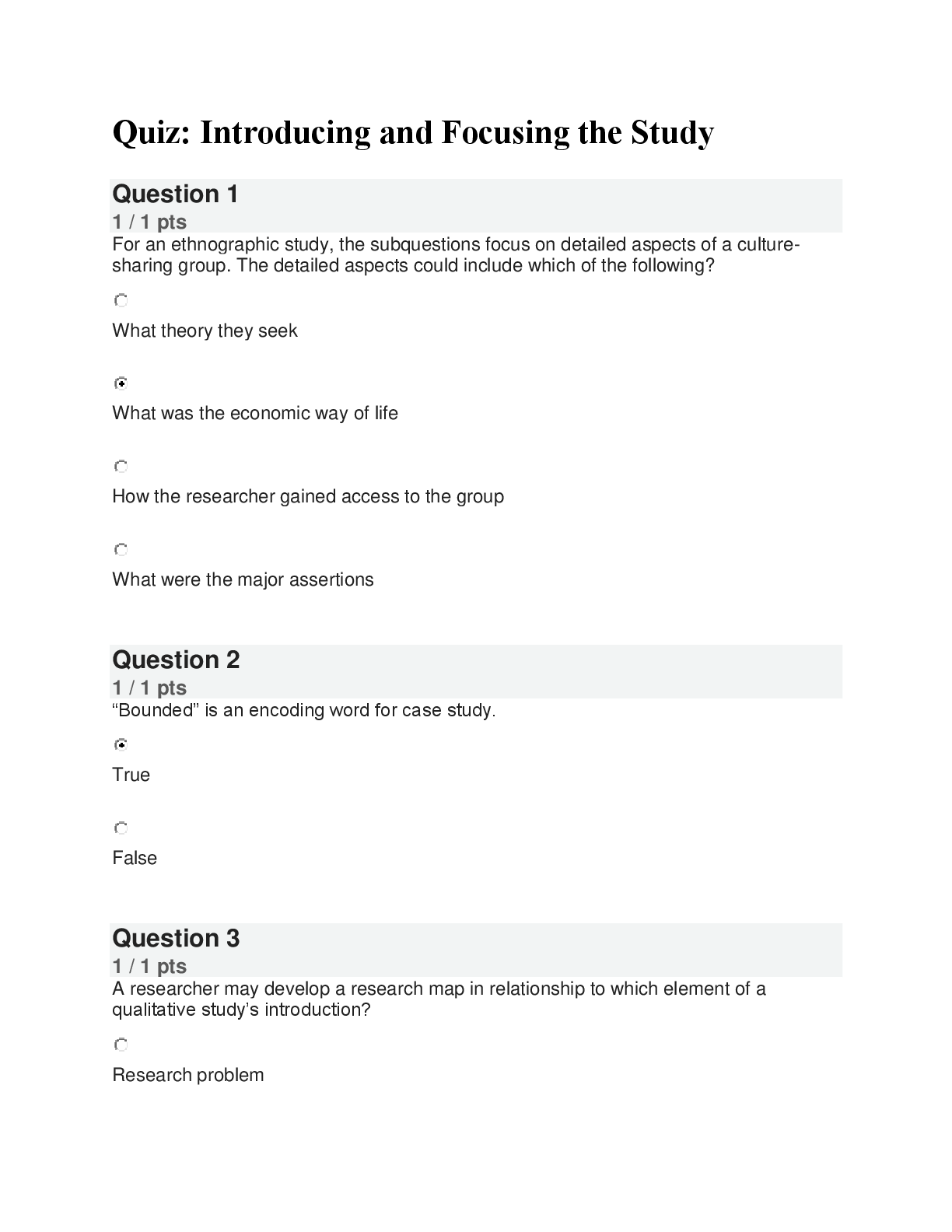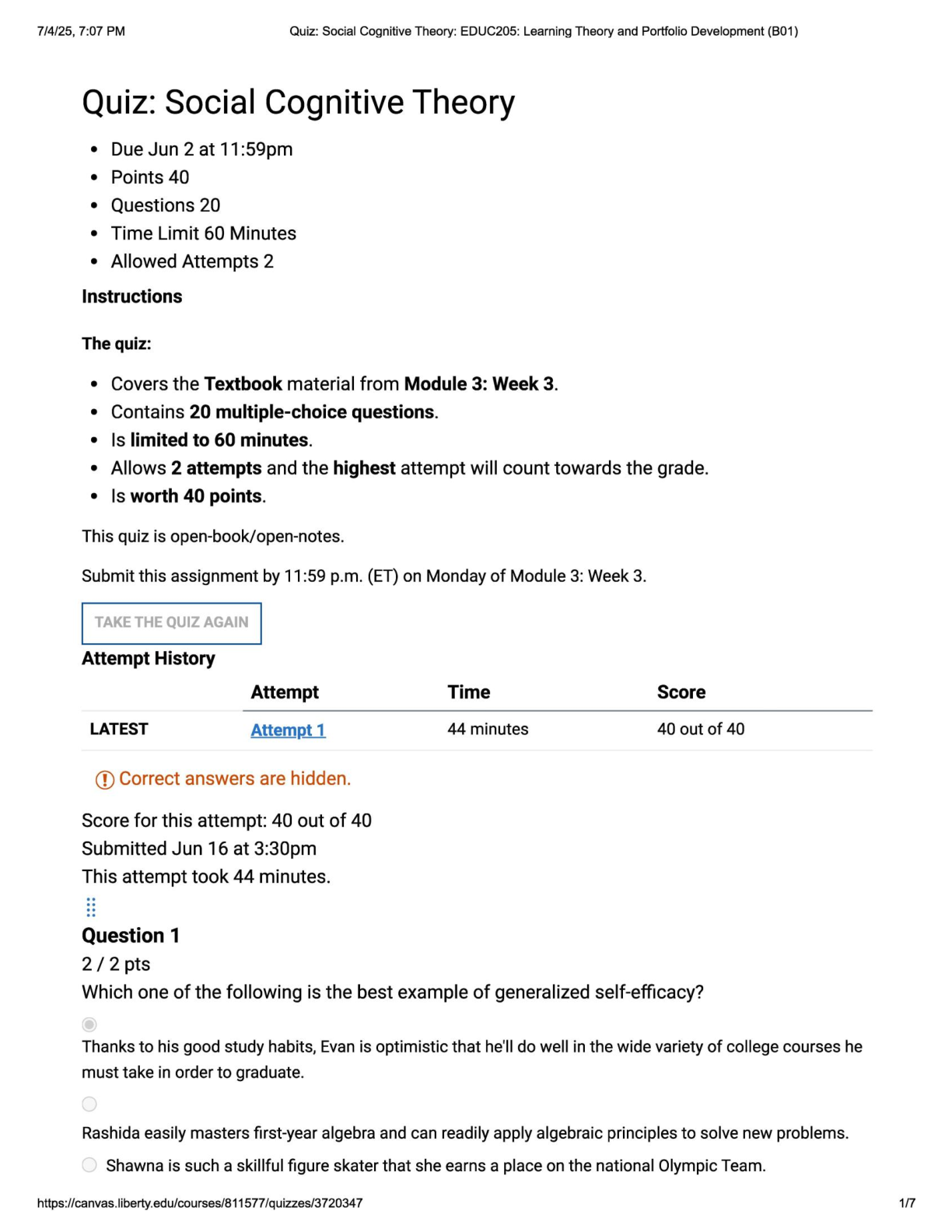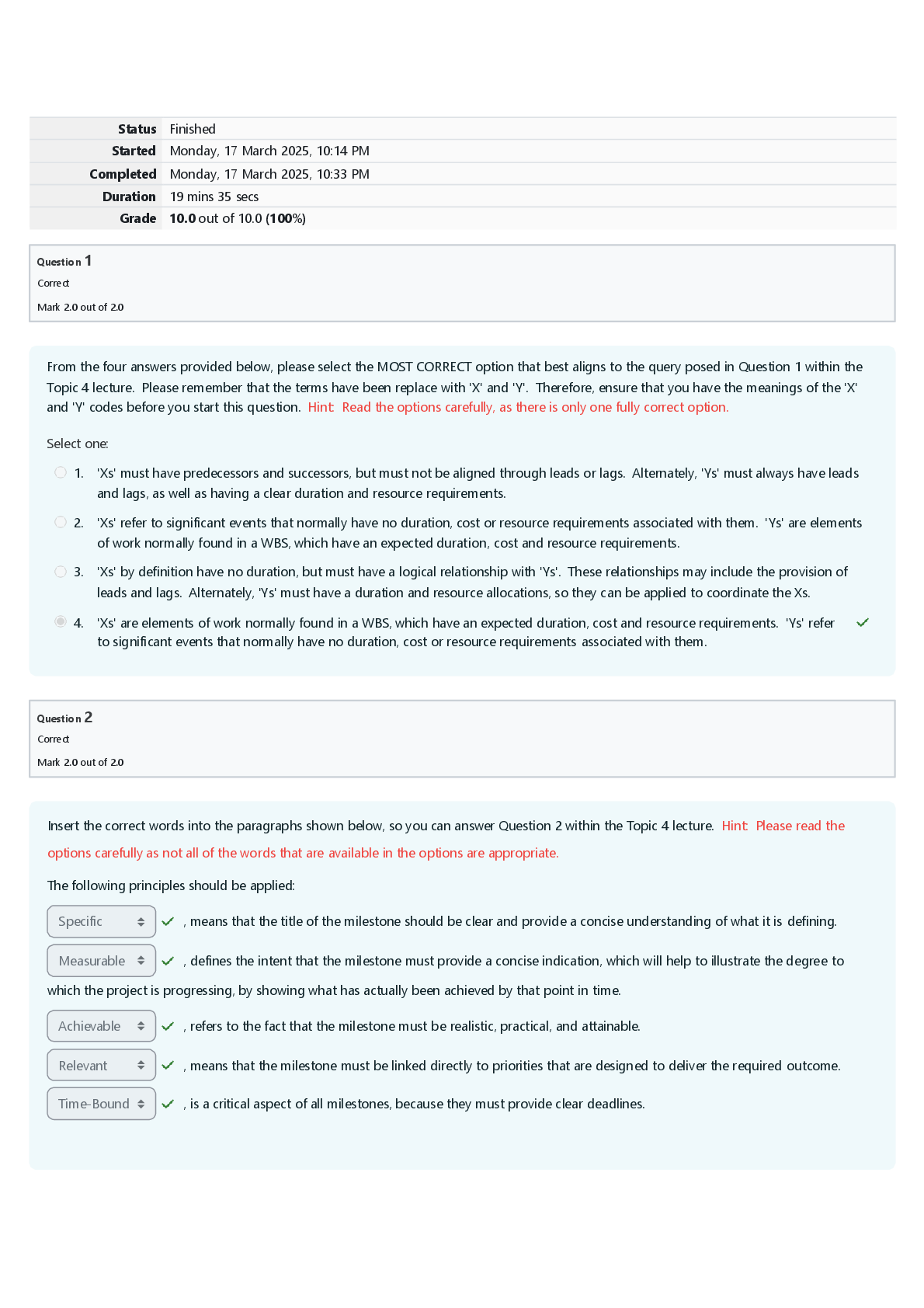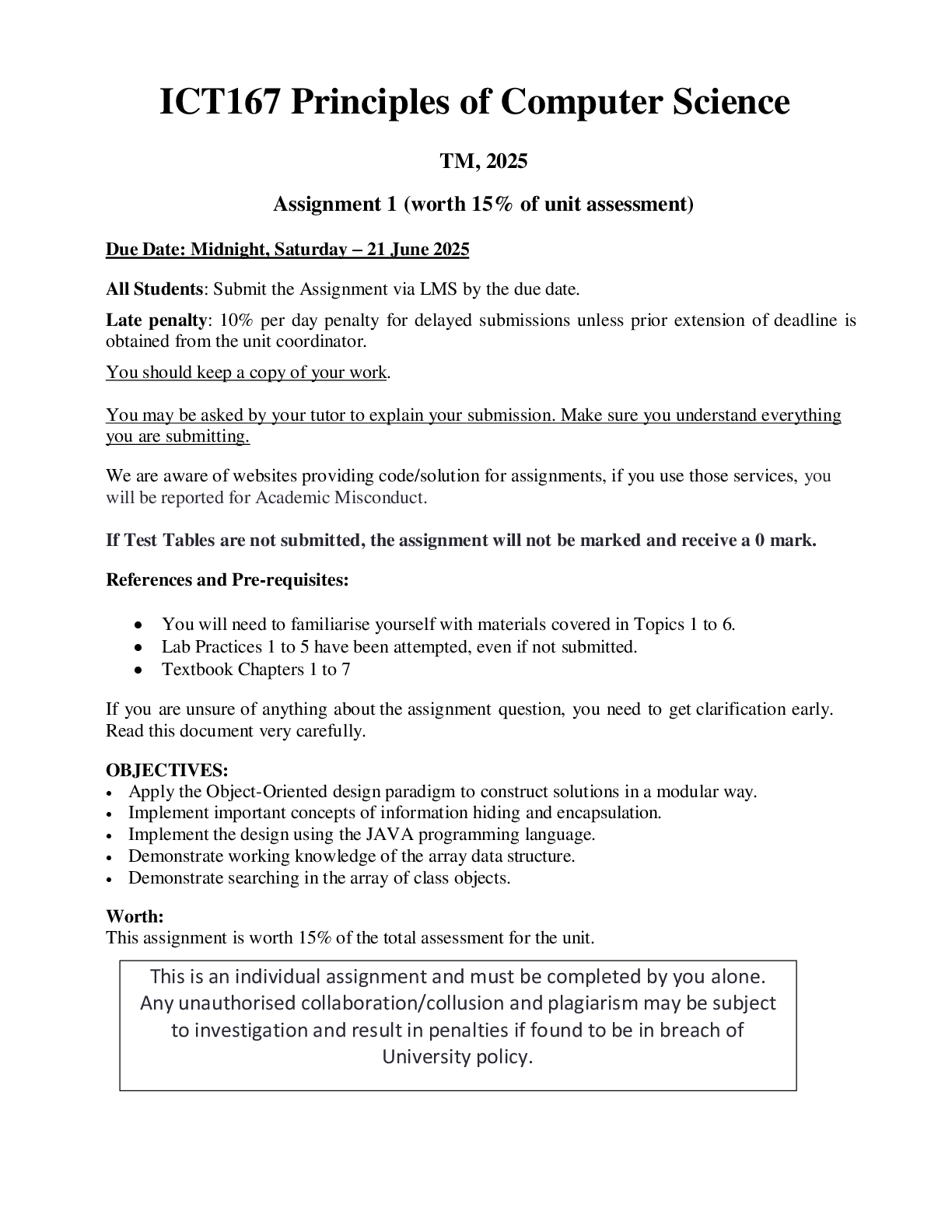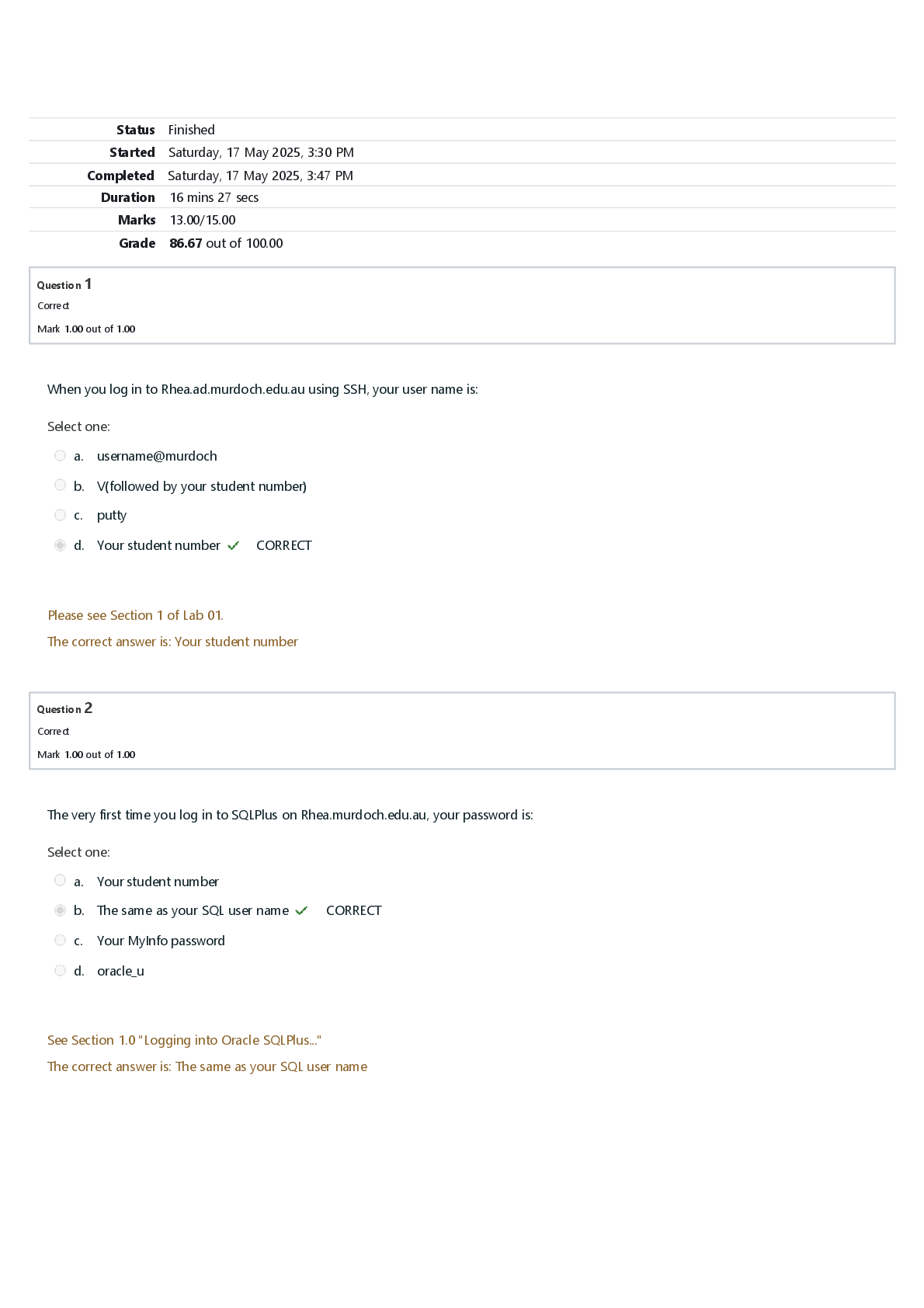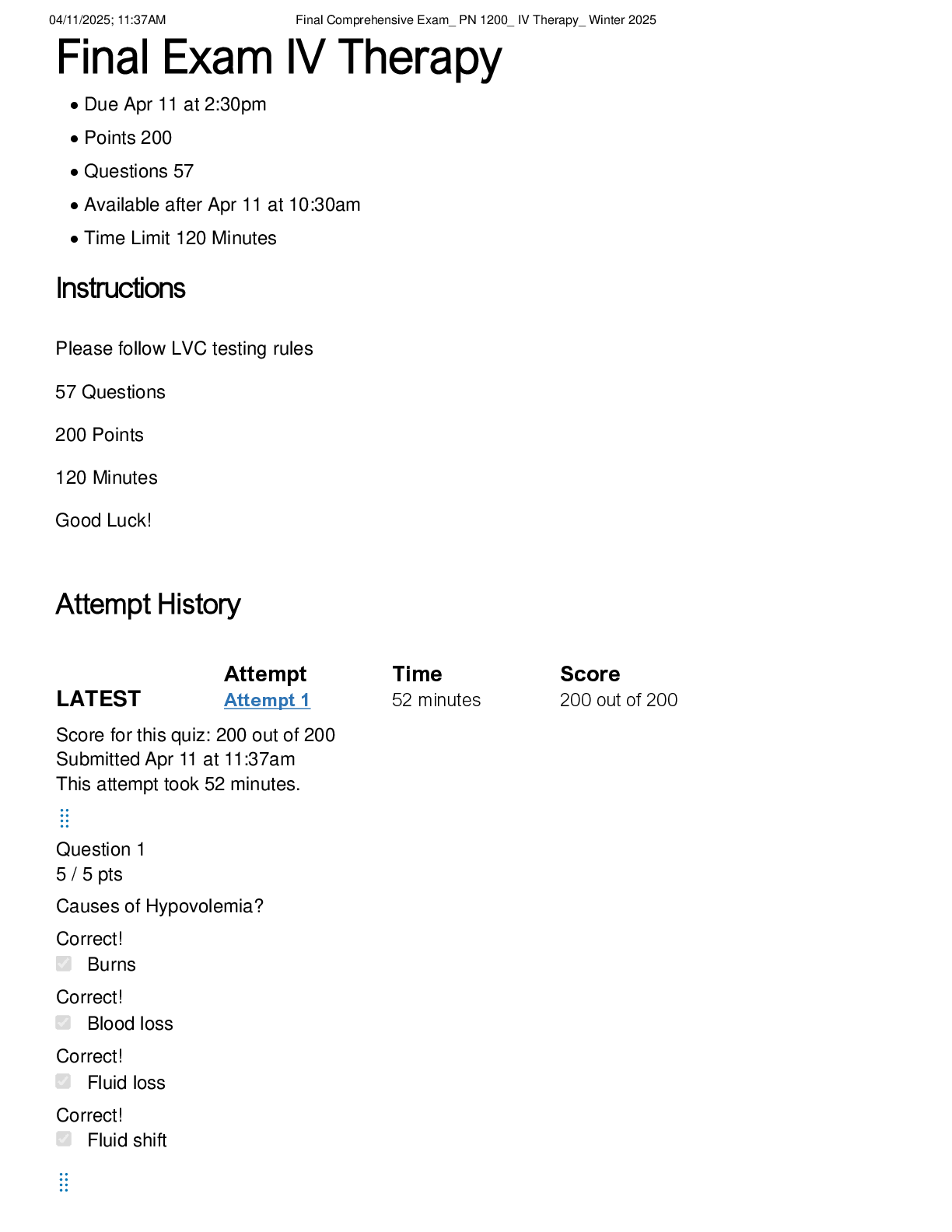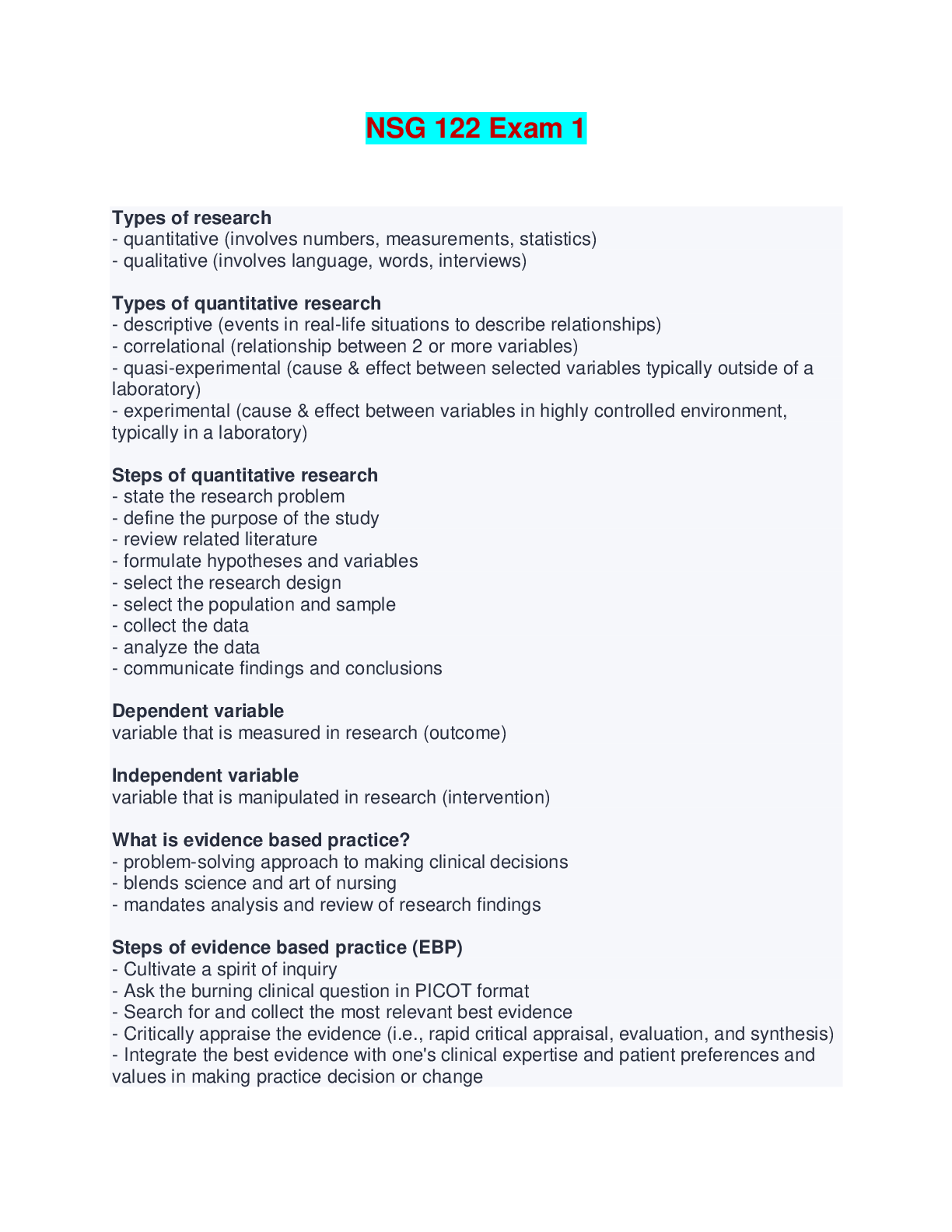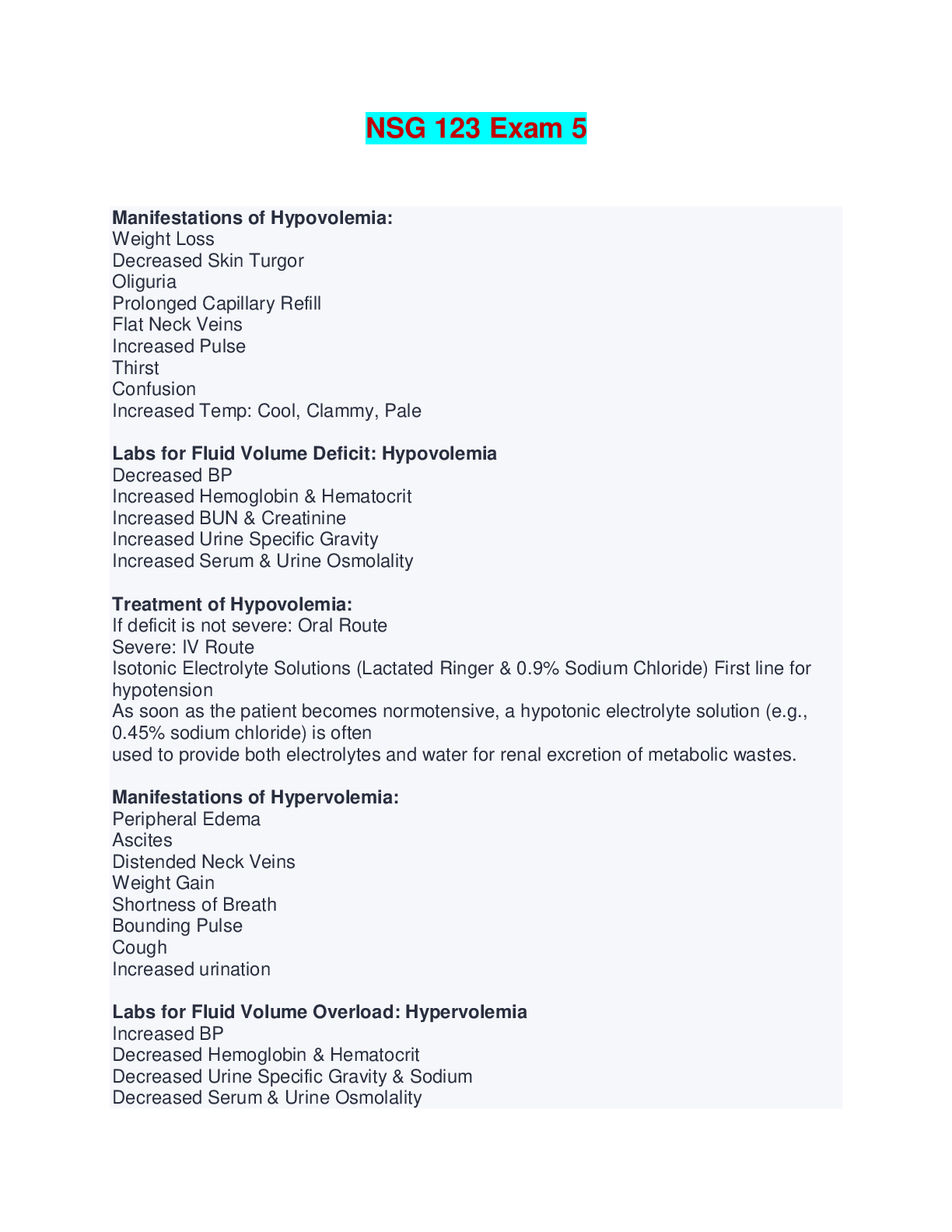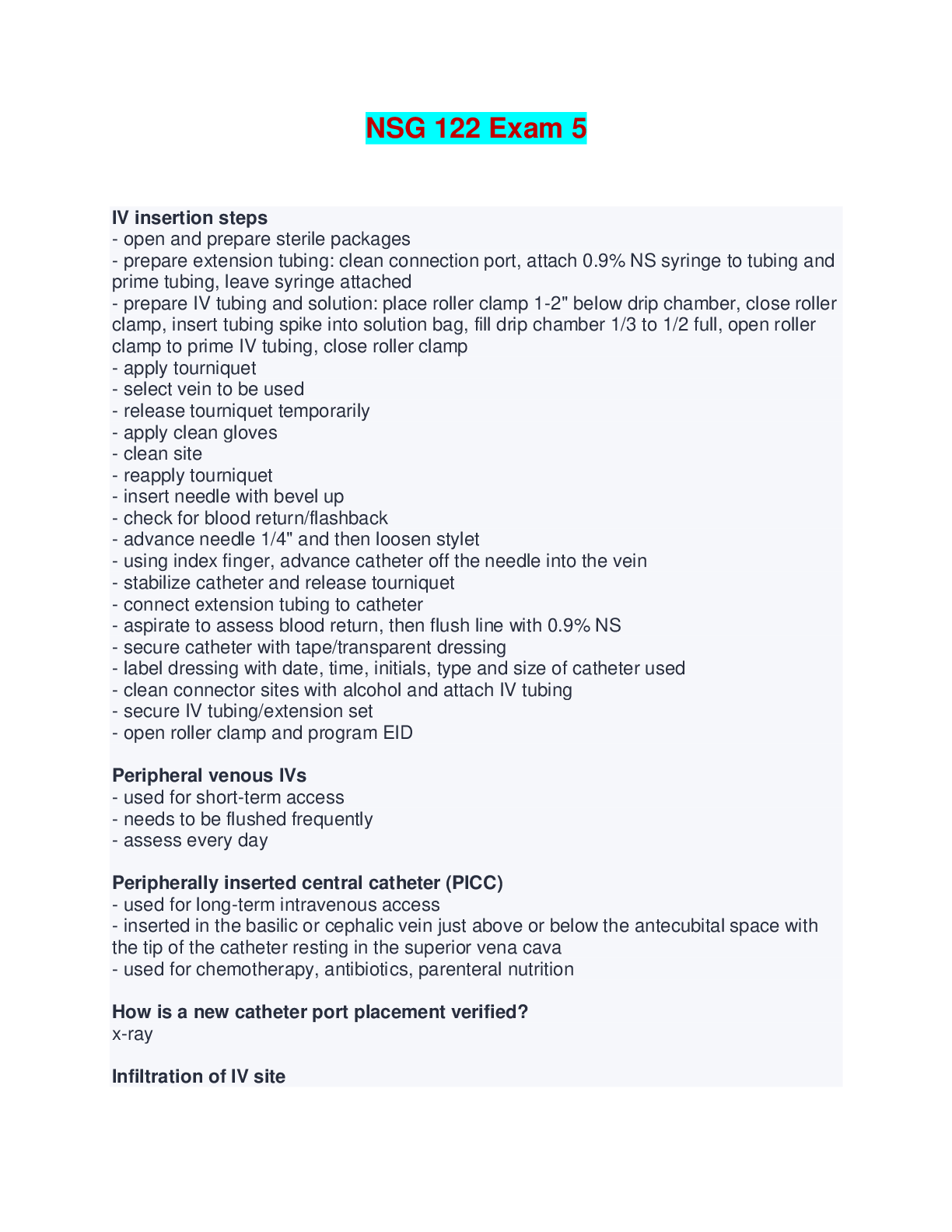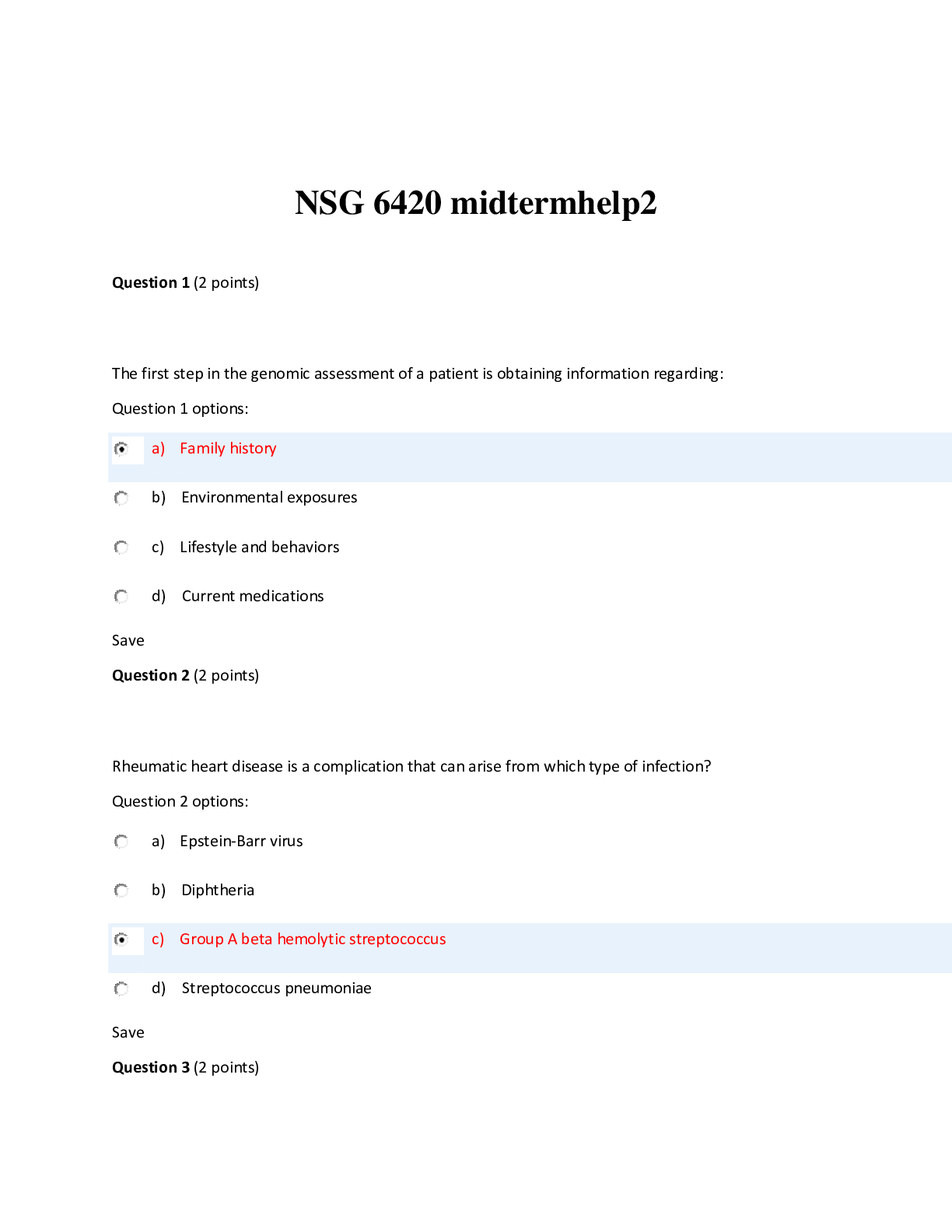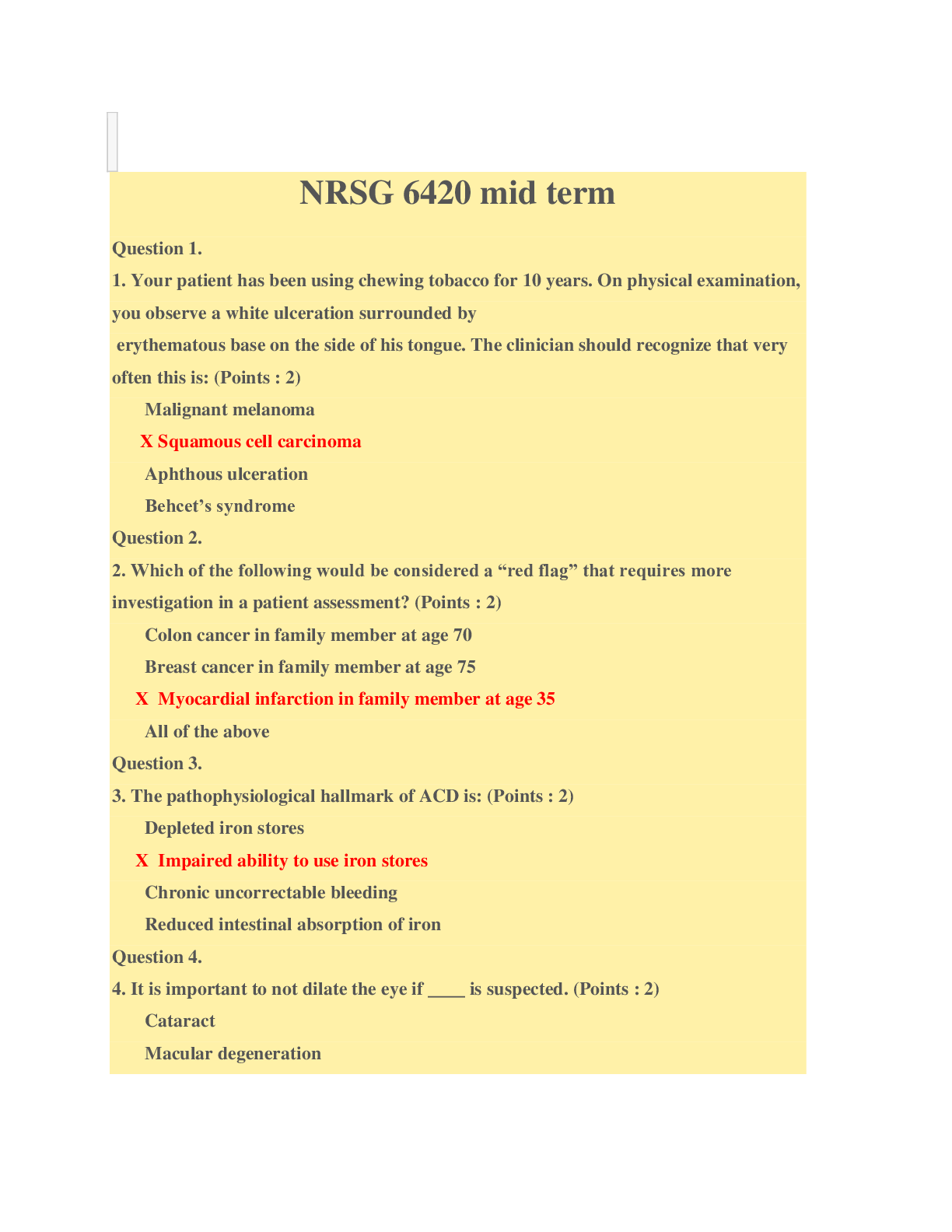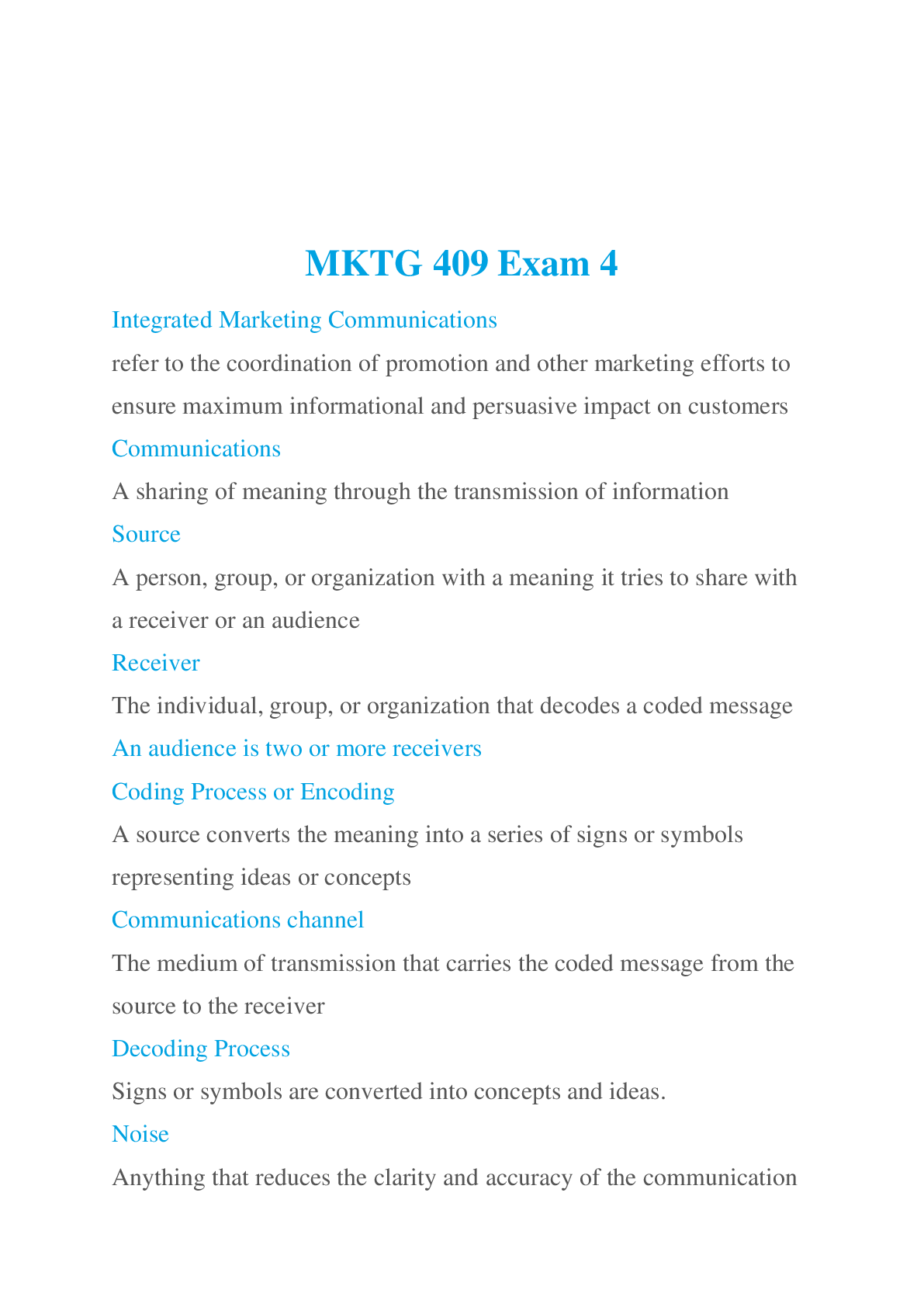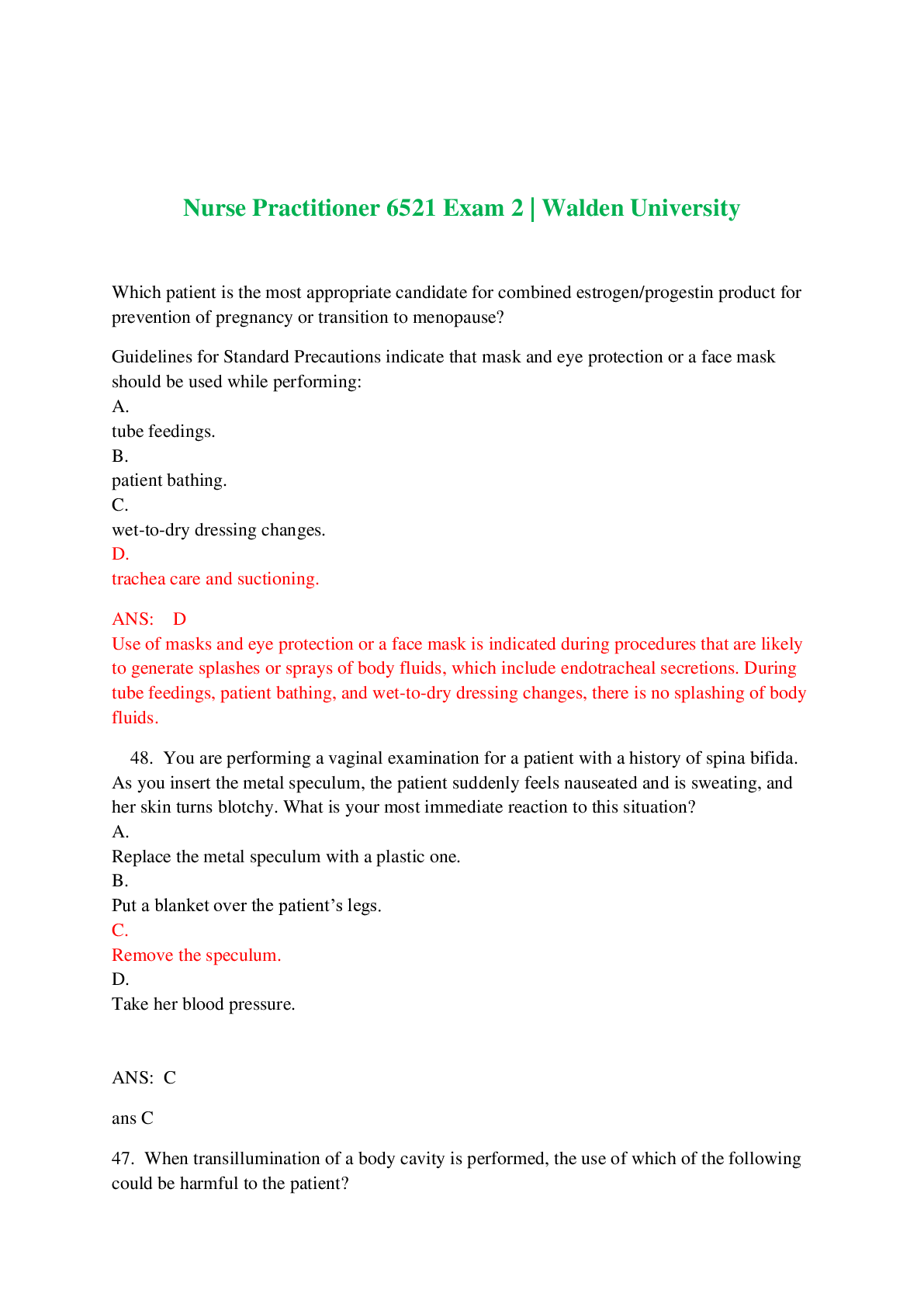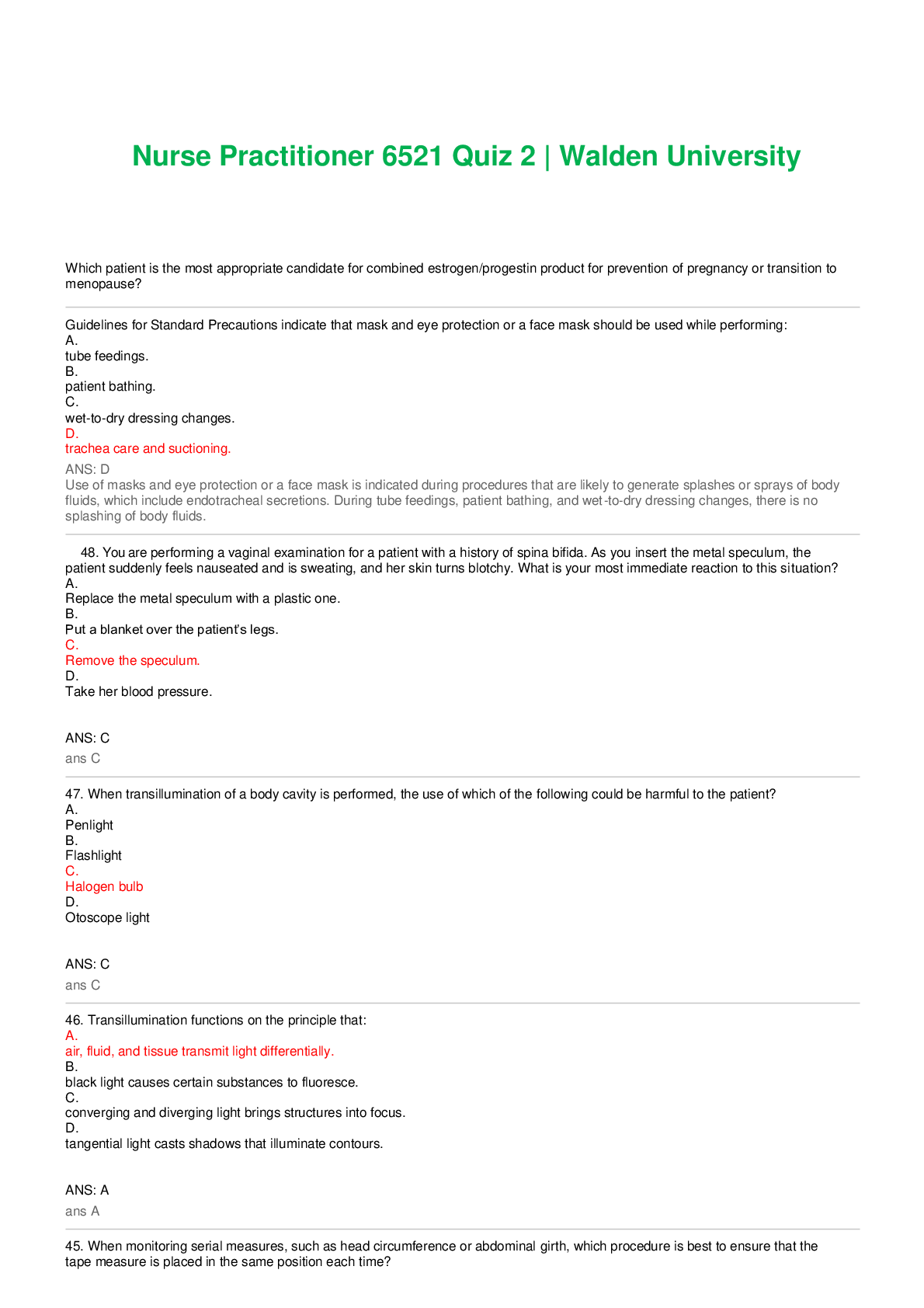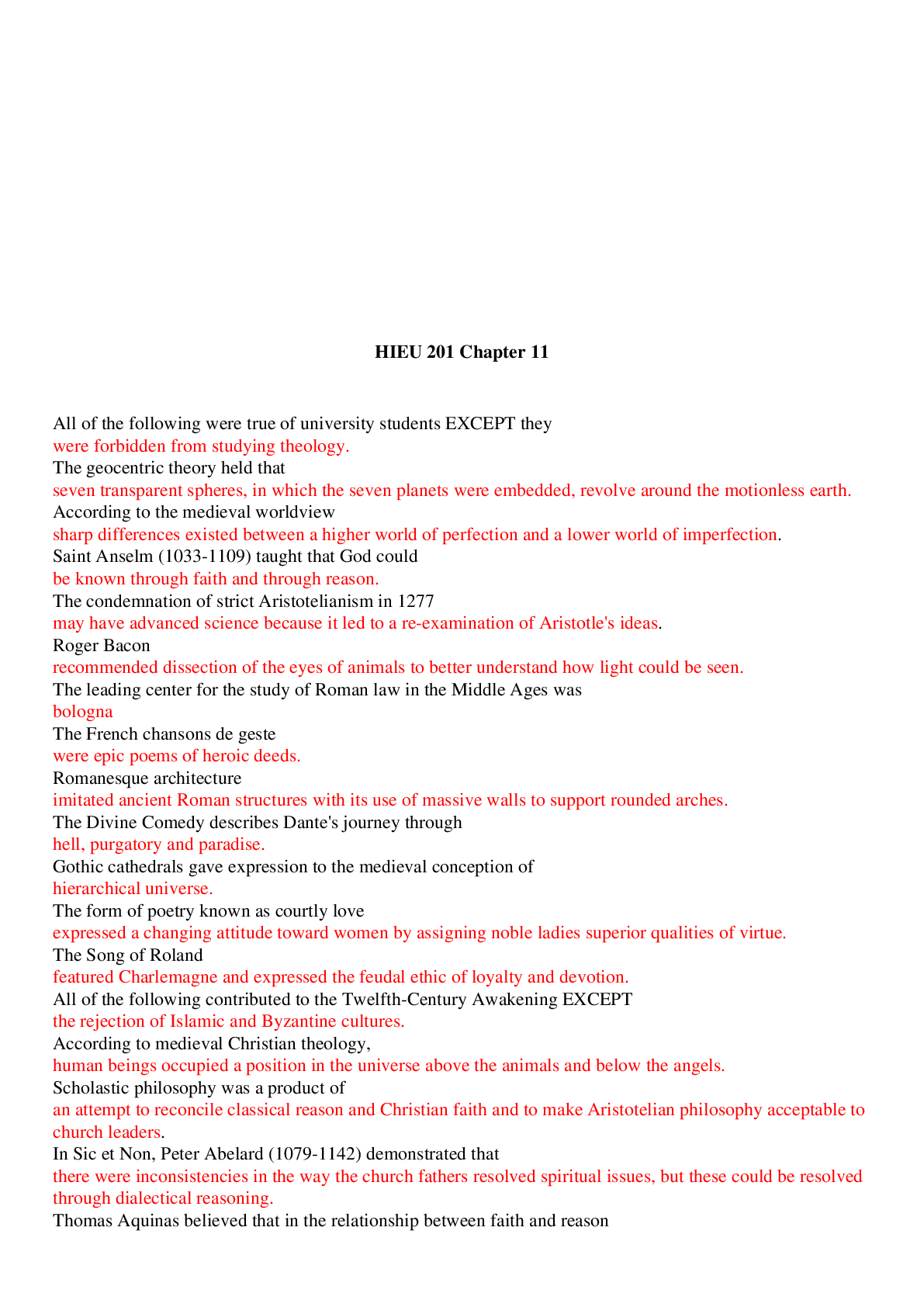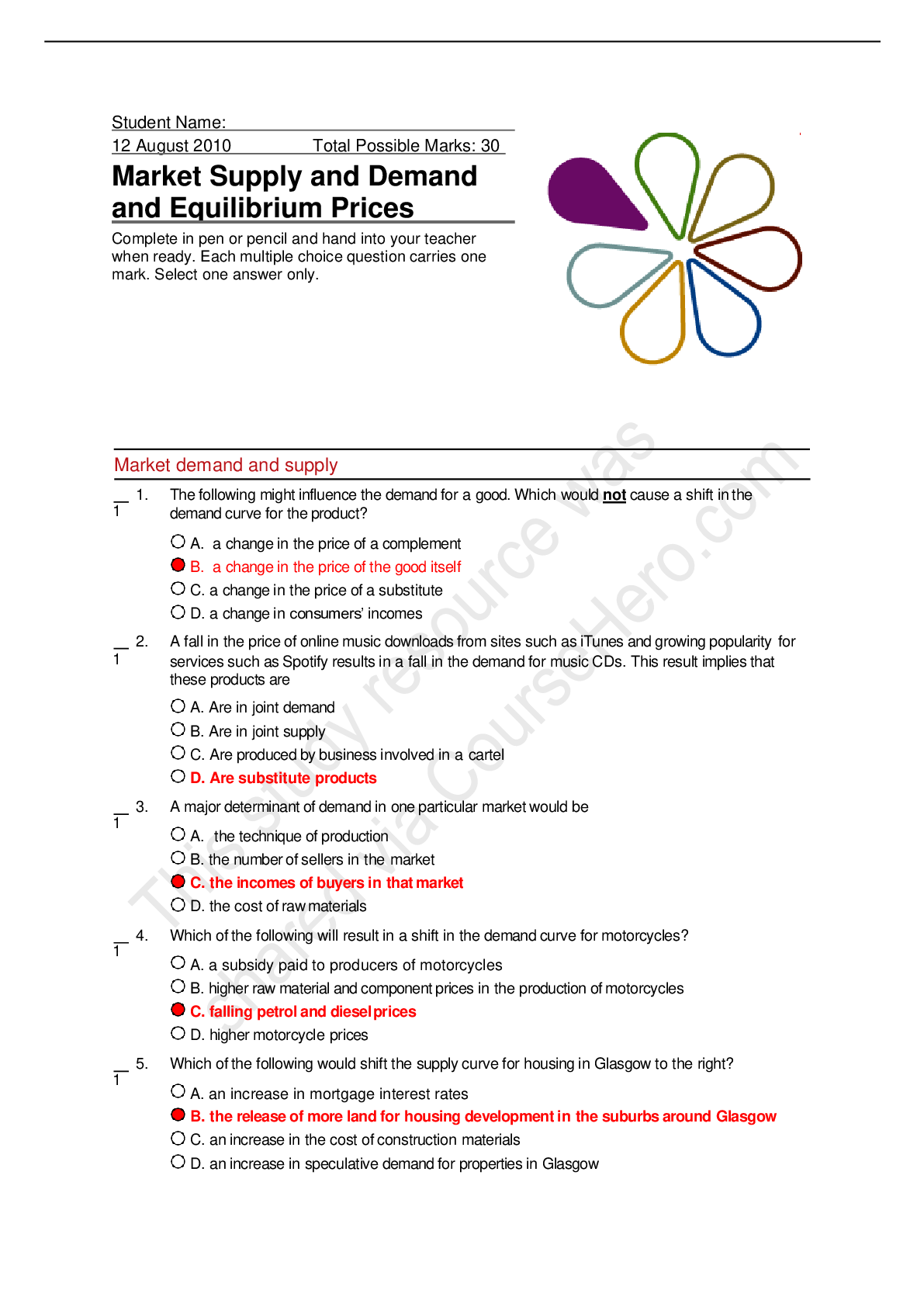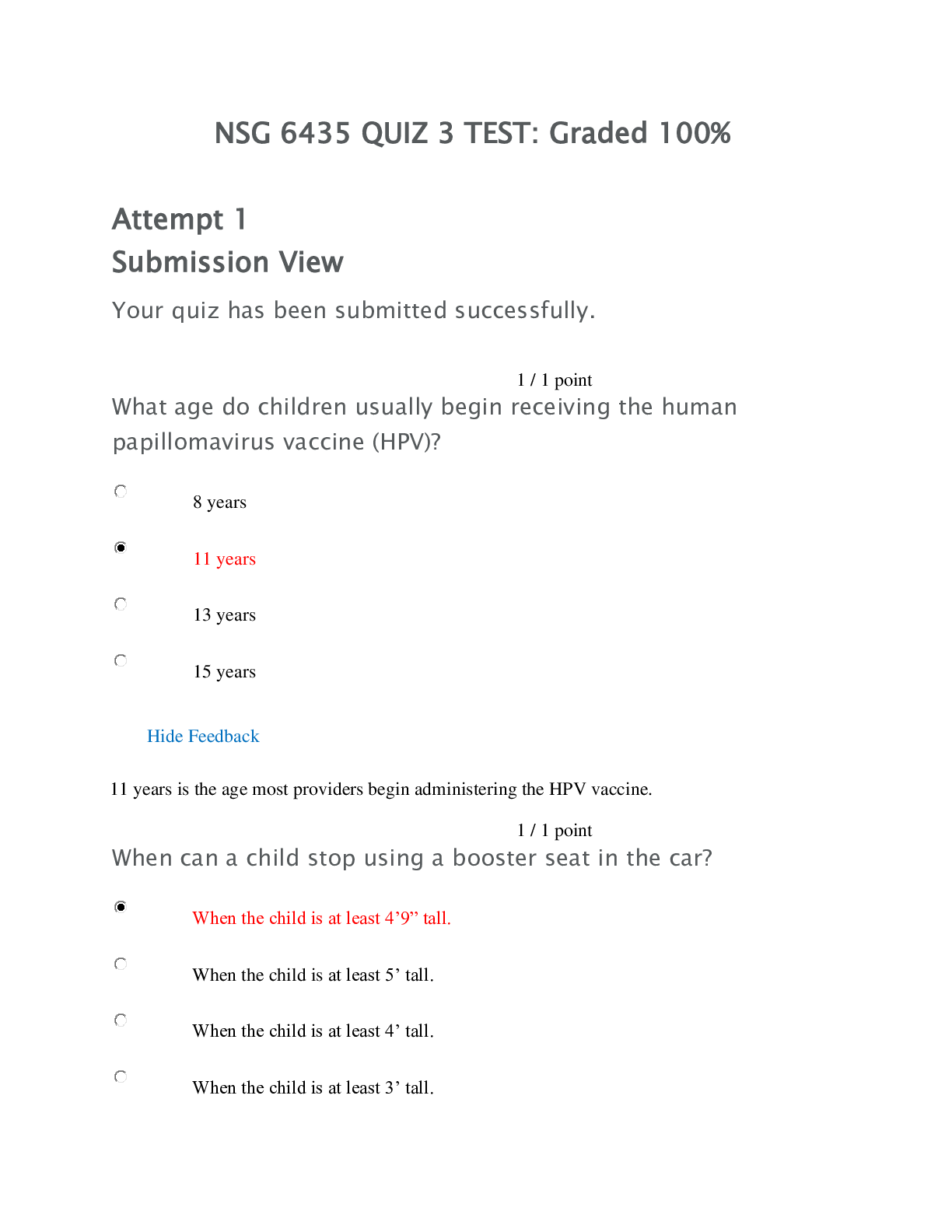Communication > EXAM > COM 100 Introduction to Human Communication At Home Final Exam Part 1; Attempt score 45 out of 50 (All)
COM 100 Introduction to Human Communication At Home Final Exam Part 1; Attempt score 45 out of 50
Document Content and Description Below
COM100 Introduction to Human Communication At Home Final Exam Part 1 Part 1 is an objective section and consists of 50 multiple-choice Question 1 of 50 Which of the following describes the qualities o ... f effective interpersonal communication conversation skills? Making introductions, relevance, tact, and sincerity Relevance, tact, sincerity, and giving directions Relevance, tact, courtesy, and sincerity Question 2 of 50 Public speaking or presentational speaking decisions about content, organization, and delivery need to be attitude centered. approach centered. audience centered. Question 3 of 50 When preparing your speech, you first need to decide on how you will organize your main ideas and then how you will organize your supporting materials so that your audience can better understand your speech. so that you can increase your ability to memorize your speech. so that you can have a minimal impact on your delivery decisions. Question 4 of 50 Group communication norms are standards or patterns of behavior determined by the group to help them increase the effectiveness of its communication and therefore be more likely to accomplish its goals. tasks a group leader and its subordinates will complete during the group communication process. organizational polices regarding how communication occurs within group meetings. Question 5 of 50 Which of the following is not an example of an organizational pattern to amplify and clarify the proof in a speech? Authority Compare/contrast Example Question 6 of 50 Good organization of a speech keeps the time shorter during the speech. conveys meaning to an audience. means that the introduction and the conclusion are the longest parts of a speech. Question 7 of 50 Group communication roles are behaviors and skills that need to be present and used in order for the group to accomplish its goals. behaviors and skills needed only when groups are having conflict. behaviors and skills based on people's personalities and role expectations. Question 8 of 50 An agenda is a schedule of the group's discussion topics and activities that, ideally, the group develops to provide directions and organization for the group meeting time. assign work tasks to individual people. remind people of due dates for reading assignments. Question 9 of 50 Which of the following is not true? Nonverbal communication cannot contradict verbal behaviors. Nonverbal communication can reinforce verbal communication. Nonverbal communication affects an audience. Question 10 of 50 Not every speech will have its purpose accomplished by the use of presentation software. organized support. deep structure. Question 11 of 50 Successful group brainstorming depends on the groups' access to information. ability to evaluate each group member. ability to separate idea generation from evaluation of ideas. Question 12 of 50 Speakers often struggle with narrowing a topic when they do not want to spend too much time preparing for their speech. want to keep the speech as short as possible. know a great deal about the topic and want to tell the audience everything they know. Question 13 of 50 Audiences respond positively to variations in volume, rate, and pitch when the speaker uses variety to memorize the speech. persuade the audience. develop meaning Question 14 of 50 It is important to have a thesis statement or central idea that reflects one topic because your audience does not have to anticipate listening to multiple ideas. multiple topics are often more confusing to follow and to understand. it will assist you in knowing when you have enough research compiled. Question 15 of 50 If communication apprehension is going to interfere with your communication, you could change your clothes. focus on preparing and rehearsing. look beyond the last row of the audience. Question 16 of 50 Which of the following is not a characteristic of an effective group leader? The effective group leader is a good listener. The effective group leader lets the role affect his or her personality. The effective group leader is flexible. Question 17 of 50 The group communication role of leader needs to have influence through communication skills to help the group establish its own processes. achieve its goals or desired outcomes. become more social. Question 18 of 50 Reflective Metacommunication focuses on why the communication has interference. what you need to do to improve your communication. how the receiver interprets the message. Question 19 of 50 The acronym DECIDE stands for decisions that need to be made for every step of the communication process. The first D in DECIDE stands for determine your audience. develop your message content. define your communication goal. Question 20 of 50 The three basic speech purposes are to entertain, inform, and solicit. amuse, teach, and persuade. entertain, inform, and persuade. Question 21 of 50 Developing a general purpose and then a specific purpose statement diminishes the steps for developing your central idea or thesis. helps you keep your audience in mind throughout your preparation. will not impact your delivery decisions. Question 22 of 50 Five elements represent the communication process as interaction: the sender, the receiver, the message, noise, and interference. feedback. selection. interpretation. Question 23 of 50 In general, claims support a thesis or central idea; proof supports claims; and development, including details and examples, supports proof. the specific purpose supports proof. solutions support proof. Question 24 of 50 You can develop a more effective extemporaneous style if you use a formal outline and follow it exactly. use your preparation time to make good communication decisions based on DECIDE. engage the receivers through multi-modality presentations. Question 25 of 50 Group maintenance roles help establish and maintain the support materials and resources that the group needs. positive and cooperative relationships. the record keeping and minutes from the meeting. Question 26 of 50 In addition to considering the situation, purpose, and audience, communication technology requires that you adapt your message to fit the technology. are less formal than in your written communication. make sure your messages are private. Question 27 of 50 Which of the following behaviors does not contribute to a supportive group communication climate? Certainty Equality Problem orientation Question 28 of 50 Group communication norms can help a group develop an agenda where everyone gives input on what needs to be accomplished. productivity is accomplished through barrier identification. listening is an implied activity. Question 29 of 50 Which of the following are goals of a good thesis for an effective speech? To be precise and concise To guarantee interest and results To direct delivery decisions Question 30 of 50 Consensus in group communication means allowing the majority to have their way. a decision that everyone can live with. the group leader role makes the final decision. Question 31 of 50 Group communication norms are a way to monitor the use of resources. help assign responsibilities for bringing refreshments. are standards, rules, or patterns that a specific group needs to use based on their own discussions and decisions. Question 32 of 50 The channel and the context are not the same thing in the communication model; the channel is the method and the context is the media. technology. situation. Question 33 of 50 Effective speech delivery is natural, aligns with the message, and aligns with the situation. aligns with the technology that is available. is impromptu. Question 34 of 50 One of the biggest benefits of using primary sources in your speech is to show that you have been thorough enough to go to original sources. give you more material to memorize. give you more materials to include in presentation software. Question 35 of 50 Reaching consensus requires the majority of the group to vote for a decision. the leader having more votes. everyone in the group to agree with the final decision. Question 36 of 50 One advantage of agendas is that they show decisions by group members by making sure that a few people's topics are going to be discussed. assigning responsibilities during the meeting. giving people paper to write on during the group meeting time. Question 37 of 50 The most important principle of language adaptation is to adapt the level of language to the situation and the audience. adapt to less formal and more colloquial language so that all people will understand you. adapt to spoken and written substandard language. Question 38 of 50 After you have decided on your general purpose, your specific purpose, your central idea, and your possible main ideas or claims, it is time to decide on your introduction's attention getting strategy. conduct topic brainstorming. research and decide on support materials. Question 39 of 50 A good thesis will accomplish the goal of being concise. telling as much about your opinions as possible. thoroughly establishing your credibility. Question 40 of 50 Which of the following is not a function of the introduction to a speech? Forecast the major ideas Establish credibility Indicate the range of volume that you will be using Question 41 of 50 Group communication occurs when a group of people have a specific task. common goal. leader. Question 42 of 50 The structure of support for a thesis in a speech is the number of paragraphs you have decided to write. the level of development of the points being made that align with the purpose. the transitions that take you to the conclusion. Question 43 of 50 Metacommunication means thinking about communication. anticipating with whom you are speaking. criticizing the other person for not listening to what you had to say. Question 44 of 50 You can determine that a group is communicating well by evaluating how the group members perform communication social functions. how the group members perform adaptive metacommunication functions. how the group members perform group communication task and maintenance functions. Question 45 of 50 A problem-solving sequence, also known as a reflective thinking process, is a systematic approach to solving a problem that does not allow for group-think. is a one-size-fits-all prescription. provides focus and order for the group members. Question 46 of 50 People need to play the task group communication roles in a group so that they can use specific communication skills to help the group be more successful. impact the work assigned to them. keep the meeting time reduced. Question 47 of 50 In effective communication, the receiver or audience has two primary jobs: to judge and to evaluate the sender's information. to filter and to process the sender's information. to listen and to send feedback regarding the sender's information. Question 48 of 50 The feedback loop helps you produce the meaning you desire to be understood. know who agrees with you and who does not. more often in organizational communication. Question 49 of 50 If you are in a group communication situation, who is your audience? Your immediate supervisor and stakeholders in the company. The other people in the organization. The individuals who comprise the group. Question 50 of 50 A word's denotation is its abstract meaning. emotional meaning. explicit meaning. [Show More]
Last updated: 3 years ago
Preview 1 out of 13 pages

Buy this document to get the full access instantly
Instant Download Access after purchase
Buy NowInstant download
We Accept:

Also available in bundle (1)
Click Below to Access Bundle(s)

Part 1; Attempt score 45 out of 50,COM 100 Introduction to Human Communication At Home Final Exam Part 2 (true/false) ***This will get you 47/50***
COM 100 Introduction to Human Communication At Home Final Exam Part 1; Attempt score 45 out of 50,COM 100 Introduction to Human Communication At Home Final Exam Part 2 (true/false) ***This will get yo...
By Ajay25 4 years ago
$18.5
2
Reviews( 0 )
$13.50
Can't find what you want? Try our AI powered Search
Document information
Connected school, study & course
About the document
Uploaded On
Jan 05, 2021
Number of pages
13
Written in
All
Additional information
This document has been written for:
Uploaded
Jan 05, 2021
Downloads
0
Views
162


